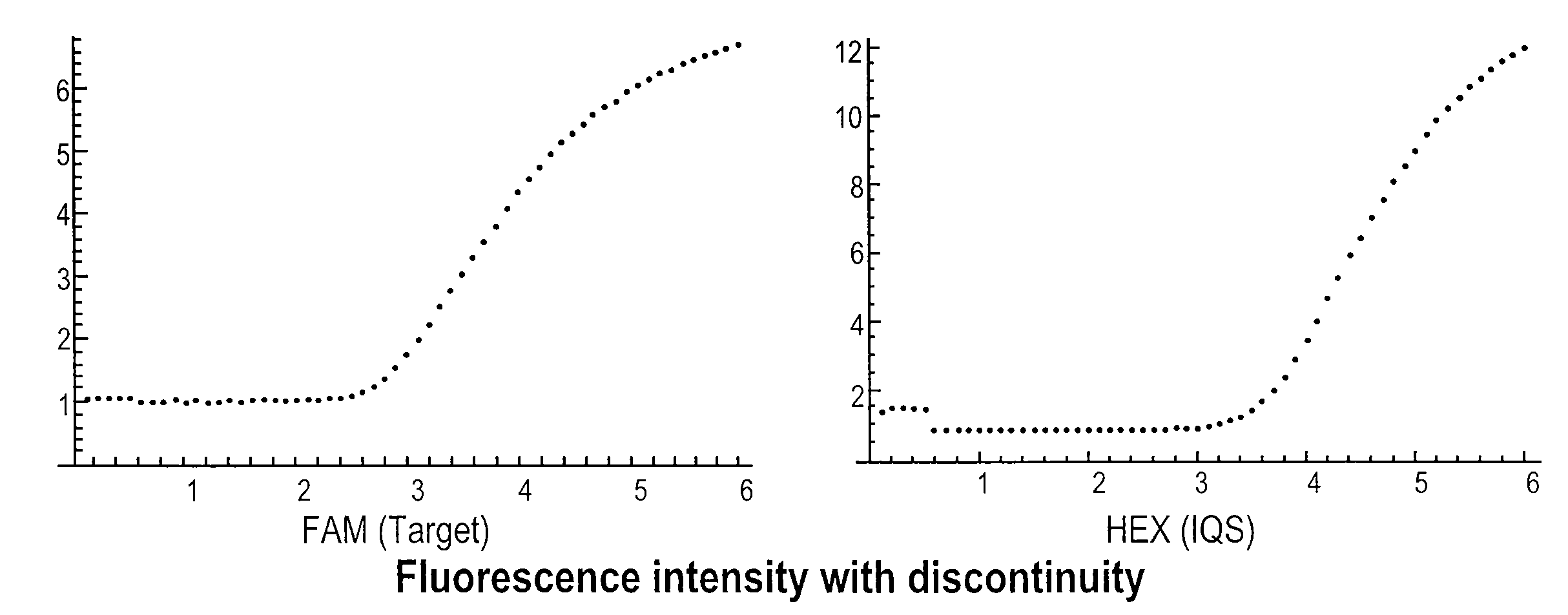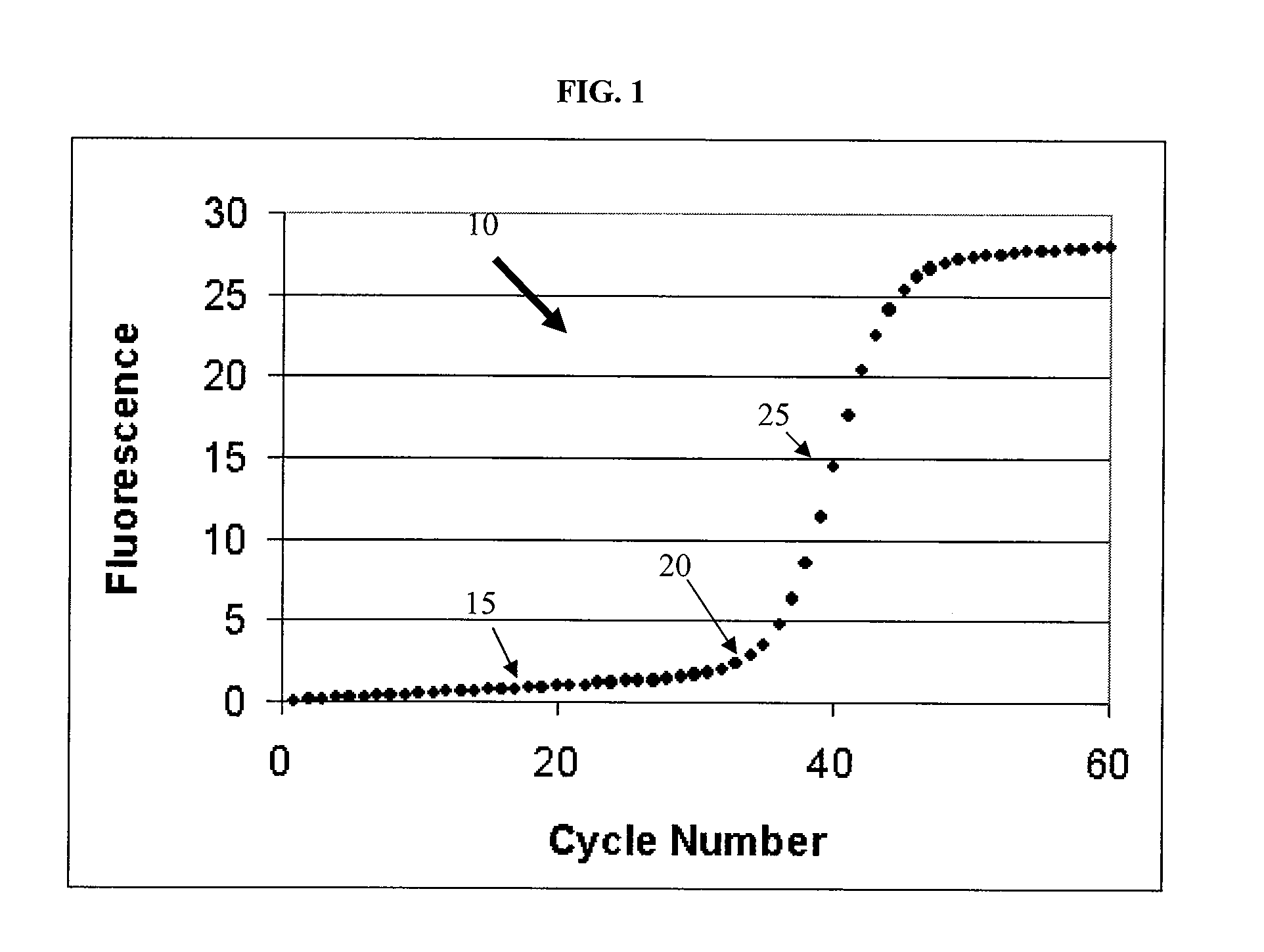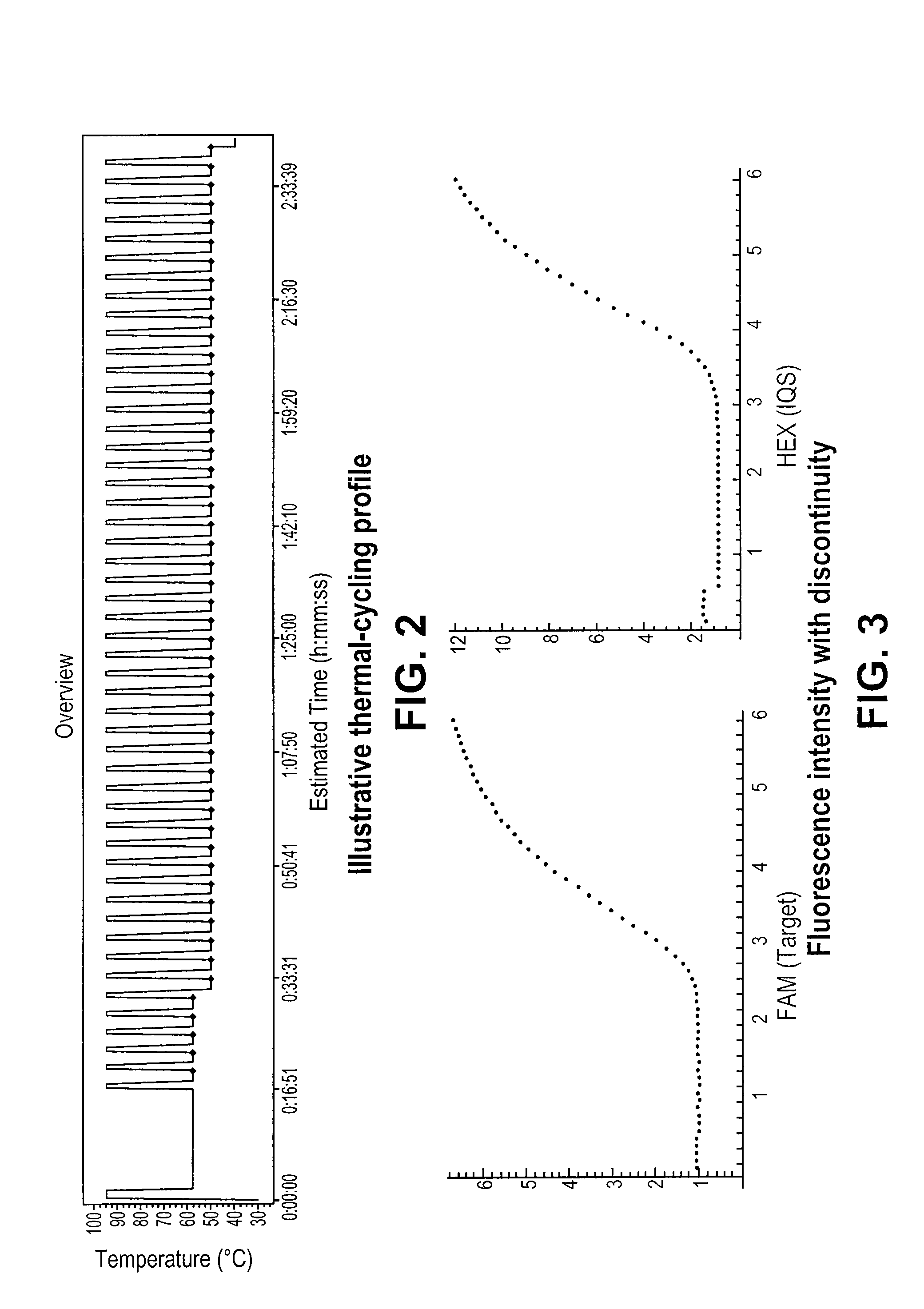Systems and methods for step discontinuity removal in real-time PCR fluorescence data
- Summary
- Abstract
- Description
- Claims
- Application Information
AI Technical Summary
Benefits of technology
Problems solved by technology
Method used
Image
Examples
case 1
[0096]This is an IQS (HEX channel) fluorescence data from CAP / CTM HIV Monitor assay. The assay design had a jump discontinuity after cycle 15. FIG. 12 shows the raw fluorescence data (dots) and corrected data (solid line). Table 4, below, shows the estimated coefficients and the corresponding confidence intervals. The R2 for case 1 is greater than 0.99.
TABLE 4Coefficients for case 1 illustrationEstimateAsymptotic SECIa2.312750.122562{2.06485, 2.56066}b0.02523590.00549652{0.0141181, 0.0363536}c96.36090.27873{95.7971, 96.9247}d0.2390470.00396729{0.231022, 0.247072}e33.1250.0631932{32.9971, 33.2528}f0.7583240.00809917{0.741941, 0.774706}g31.99430.0357128{31.922, 32.0665}h0.9080270.0861226{0.733827, 1.08223}
case 2
[0097]This is a B19 Parvo-virus target channel (FAM Channel) without any real target being amplified. The assay design has a jump discontinuity after cycle 5. FIG. 13 shows the raw fluorescence data (dots) and corrected data (solid line). Table 5, below, shows the estimated model coefficients and their corresponding confidence interval. The R2 for case 2 is 0.94.
TABLE 5Coefficients for case 2 illustrationEstimateAsymptotic SECIa8.427420.0100461{8.4073, 8.44754}b0.006855080.000274316{0.00630577, 0.00740439}h0.4420160.0171885{0.407597, 0.476435}
case 3
[0098]This is a target of a HBV High Pure (FAM channel). This assay does not have a jump discontinuity. The confidence interval of the coefficient h in this case will include zero. Hence, no correction of discontinuity is required. FIG. 14 shows the raw data (dots) and corrected data (solid line). Table 6, below, shows the estimated model coefficients and their corresponding confidence intervals. The R2 for case 3 is greater than 0.99.
TABLE 6Coefficients for case 3 illustrationEstimateAsymptotic SECIa3.118980.0996001{2.91861, 3.31935}b0.008964660.00591903{−0.00294289, 0.0208722}c23.02620.209375{22.605, 23.4474}d0.3504980.0578984{0.234021, 0.466974}e26.64821.32442{23.9838, 29.3125}f0.6099210.0235677{0.562509, 0.657333}g29.36330.302858{28.754, 29.9726}h−0.003802310.0809013{−0.166555, 0.15895}
PUM
| Property | Measurement | Unit |
|---|---|---|
| Absorbance | aaaaa | aaaaa |
| Fluorescence | aaaaa | aaaaa |
| Chemiluminescence | aaaaa | aaaaa |
Abstract
Description
Claims
Application Information
 Login to View More
Login to View More - Generate Ideas
- Intellectual Property
- Life Sciences
- Materials
- Tech Scout
- Unparalleled Data Quality
- Higher Quality Content
- 60% Fewer Hallucinations
Browse by: Latest US Patents, China's latest patents, Technical Efficacy Thesaurus, Application Domain, Technology Topic, Popular Technical Reports.
© 2025 PatSnap. All rights reserved.Legal|Privacy policy|Modern Slavery Act Transparency Statement|Sitemap|About US| Contact US: help@patsnap.com



